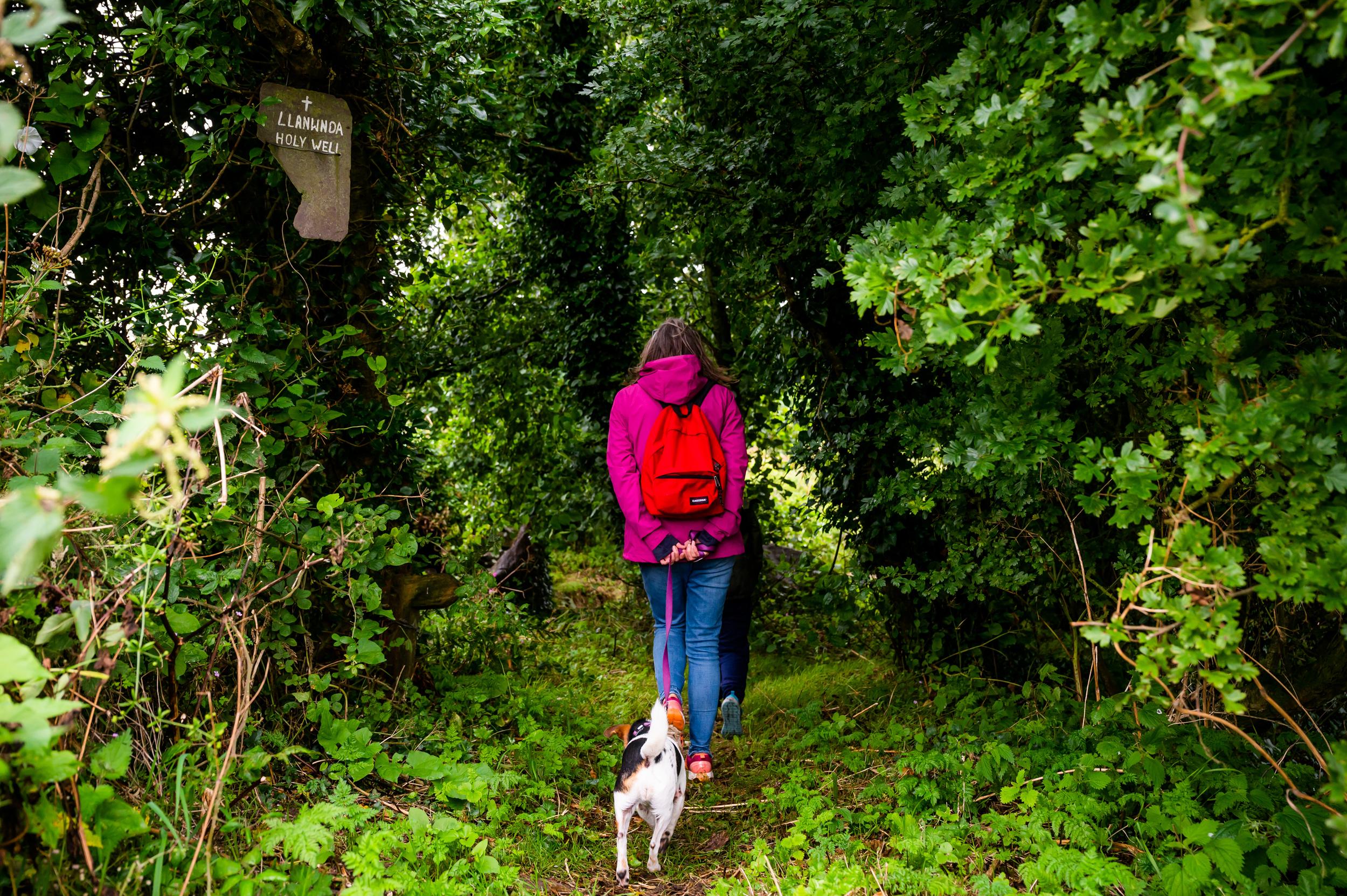
Great Welsh church walks
Inspirational walks in and around ancient Welsh Churches
by Caroline Welch, Church Support Officer Wales
Looking for ideas for some amazing walks this year?
If you like atmospheric places off the beaten track, Wales ancient churches are a great place to start.
Often discovered in the middle of nowhere, situated in some of the most breath taking landscapes, Wales centuries old churches make for an excellent base, or destination, for an inspirational and invigorating walk, whatever the weather.
Caroline is herself a keen walker, regularly taking to the hills around Llandeilo where she lives to enjoy some spectacular walks. She asked friends of the National Churches Trust, to recommend their favourite walks.
Back to trails page
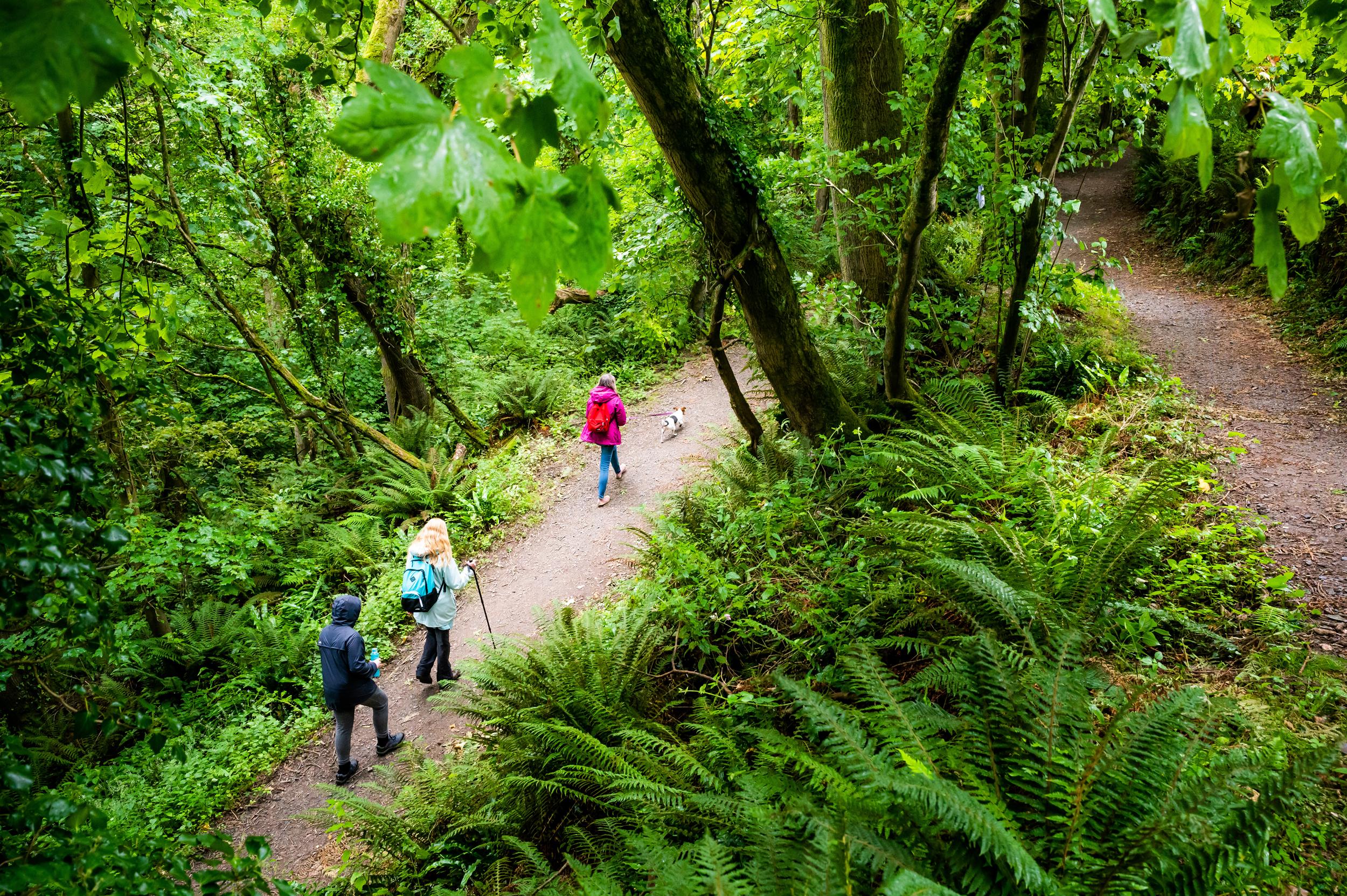
St Mary, Capel y Ffin, Abergavenny
Chosen by : Christopher Catling, CEO of the Royal Commission on the Ancient & Historic Monuments of Wales (RCAHMW)
The sweet little church of St Mary Capel y Ffin, inspiration for artists and writers for centuries, happens to sit in one of the most picturesque valleys in Wales. Nearby ‘Vision Farm’ was the inspiration for Bruce Chatwin’s evocative tale ‘On the Black Hill’ and St Mary’s is often thought of as one of Wales’ renowned ‘thin places’, where the gap between heaven and earth seems to narrow a little.
But prepare to tone up, the hills here leave no prisoners but the glories of the walks from this unspoilt spot are worth it. More hardcore walkers can make a day of it with a 10 mile route taking in the summits of Hay Bluff and the Twmpa, with spectacular views across the Brecon Beacons and Wye Valley. Or follow the path along and double back for a shorter version. There are also two other gems to see within a few short miles, Llanthony Priory and St Issui Patricio, which are both well worth a detour.
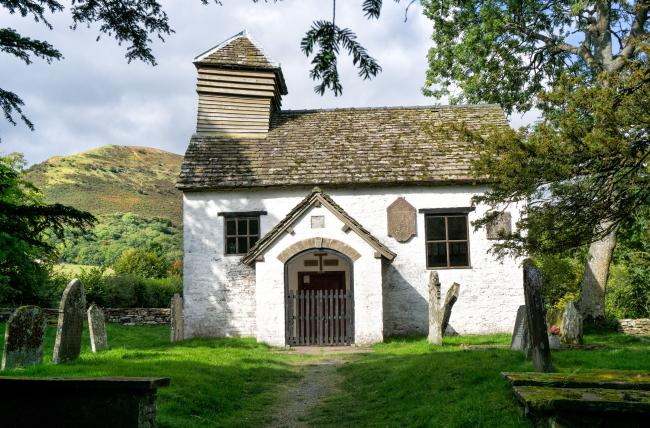
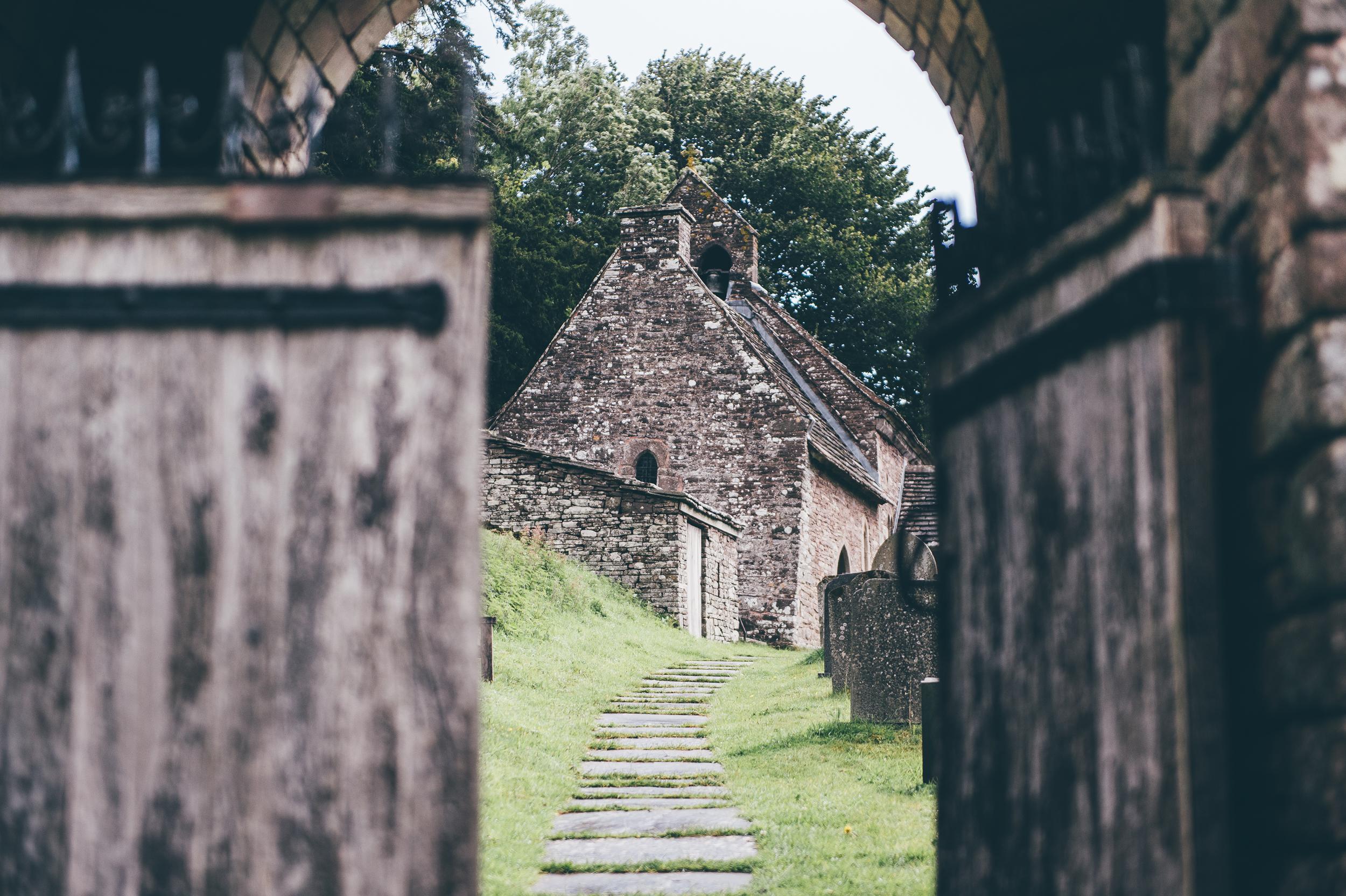
©CrownCopyright2020
Ewenny Priory & Spring Flowers Walk, Vale of Glamorgan
Chosen by : Alex Glanville, Head of Property at the Church in Wales
Given his job Alex Glanville knows a thing or two about sacred places, and his favourite walk starts at one of the most complete Norman churches in Wales, Ewenny Priory in the Vale of Glamorgan, and features an abundance of spring flowers to bring cheer after the dark days of winter.
Alex says: 'Whilst it is the area around where I live, it is also a walk that constantly surprises and reveals the amazing treasures, historic and natural, that this somewhat overlooked corner of Wales has to offer'.
Starting in the village of St Bride’s Major, take in St Bridget’s church, with its 16th century chest tomb of John and Jane Butler lying side by side, with their children as ‘weepers’ at their side, then follow the idyllic rural trail through Corntown, Ewenny and Coed y Bwl Nature Reserve for a 3, 5 or 8 mile loop. Enjoy the clapper bridge and take in the outstanding views across south Wales. And on a clear day you can see the Beacon at Rhossili Down, Gower and even over to the Somerset coast.
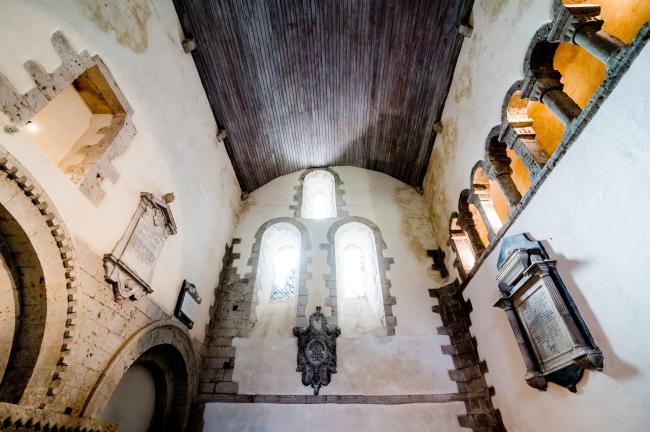
Llanrhychwyn Church, Conwy
Chosen by : Professor Maddy Gray, medieval historian
Medieval historian Professor Maddy Gray’s favourite walk is undoubtedly to St Rhychwyn Llanrhychwyn. She describes it as ‘a typical little Welsh mountain church with some stunning medieval stained glass and 18th century woodwork’.
Professor Gray notes that ‘it can be difficult to park at the church, best to drive to Llyn Geirionydd, park by the monument at the north of the lake, walk through the woods on the west bank, to rejoin the road at the southern end of the lake.
‘Take the footpaths to your left through the lead mines and past Castell-y-gwynt to Llanrhychwyn, then follow the minor road back to the lake. The whole route is about 6 km and there’s lots of potential for longer walks, taking in more of the scenery and industrial archaeology’.
Get inspiration for this walk and more amazing routes on our Cistercian Way page, written by Professor Gray.
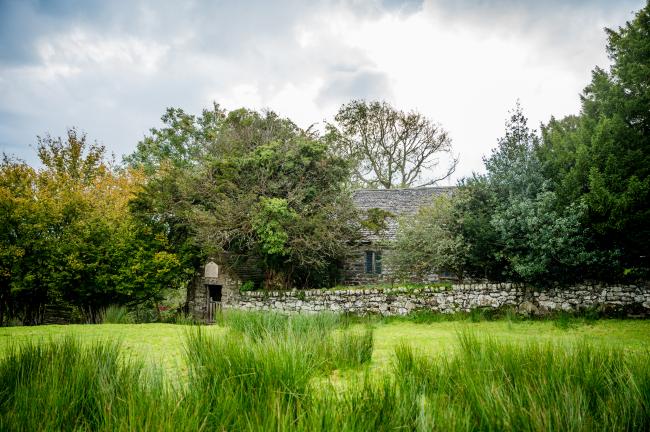

St Collen, Llangollen to the Snowdrop Church, Llantysilio, Denbighshire
Chosen by : Michael Plane, Diocesan Churches Inspector in St Asaph Diocese
As the Diocesan Churches Inspector in St Asaph Diocese it’s Michael’s job to know all the churches and the good church walks in the area, and the walk from St Collen in Llangollen to Llantysilio is his favourite.
The walk starts in Llangollen town centre where, in normal times, the church of St Collen is open for visitors and you can witness the stunning medieval ceiling, and the interesting memorials to the Ladies of Llangollen!
The second church on the walk St Tysilio Llantysilio makes a lovely spot for a picnic to break the walk. Michael says: ‘This ancient place is surrounded by naturalised snowdrops in the spring, and wild flowers in the summer and is known locally and to visitors as ‘the Snowdrop Church’ for good reason!’
The church, normally open to welcome visitors daily, overlooks the river valley and the Horseshoe Falls, popular with whitewater kayakers. There is also a car park at the Horseshoe Falls for those wanting to start the walk here instead. Alternatively, part of the journey can be done on the Llangollen Steam Railway. Trains run between Llangollen and Berwyn Station for the Horseshoe Falls, and go on to terminate at Corwen.
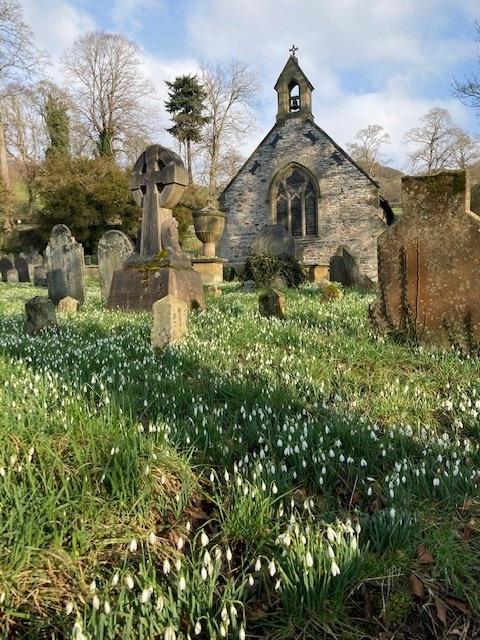
St Tydecho, Mallwyd, Gwynedd: The Red Bandits Walk
Chosen by : Arfon Hughes, local historian and tour leader
Mallwyd church was founded by St Tydecho in the 6th century after his arrival from Cornwall, and rebuilt in the early 17th century by one Dr John Davies, who also rebuilt the rectory and three bridges specifically with the purpose of encouraging his parishioners to attend the church.
Dr Davies lived in turbulent times and the aftermath of the Red Bandits that used to torment locals and travellers alike still haunted the area.
The clash between King and country, Catholicism and Protestantism even reached Mallwyd. Parliamentarian soldiers camped in the new church soon after John Davies passed away and this attack created a stir in the neighbourhood which resulted in a stand off across the river Cleifion next to John Davies’s bridge between the soldiers and a throng of local inhabitants keen to stop the soldiers from passing through.
Local historian and tour leader Arfon Hughes knows the area well, and his favourite walk starts at the iconic Brigands Inn in Mallwyd. The full loop walk is 8 miles, but shorter lengths can easily be done, starting from the old pack horse road from Mallwyd and along the Cambrian Way up through Cwm Dugoed, The Black Woods where the Red Bandits had their lair.
The circular walk takes in magnificent views of the dense wooded valley, the tump where reputedly 80 bandits were hung and buried later in a nearby field called Rhos Goch. The walk takes a south easterly direction and comes back on itself on the Llanbrynmair to Mallwyd road where you can see buzzards, red kites, and pheasants in abundance. You will be crossing from Gwynedd to Powys and back again and you will appreciate the difficulty of navigating through this area in days gone by and even today!
The route carries on down the Clywedog river valley and passes the independent chapel at Pen-Rhiw-Cul and nearby site of the Red Bandits hideout, until the walk nears Mallwyd where you can still see the old singled arch moss covered bridge of John Davies before entering the village of Mallwyd and the Brigands Inn once again.
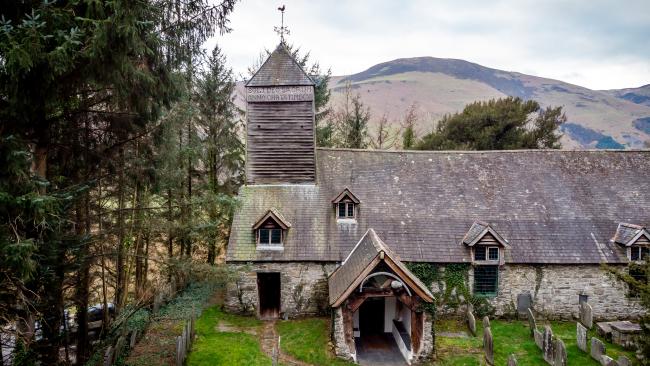
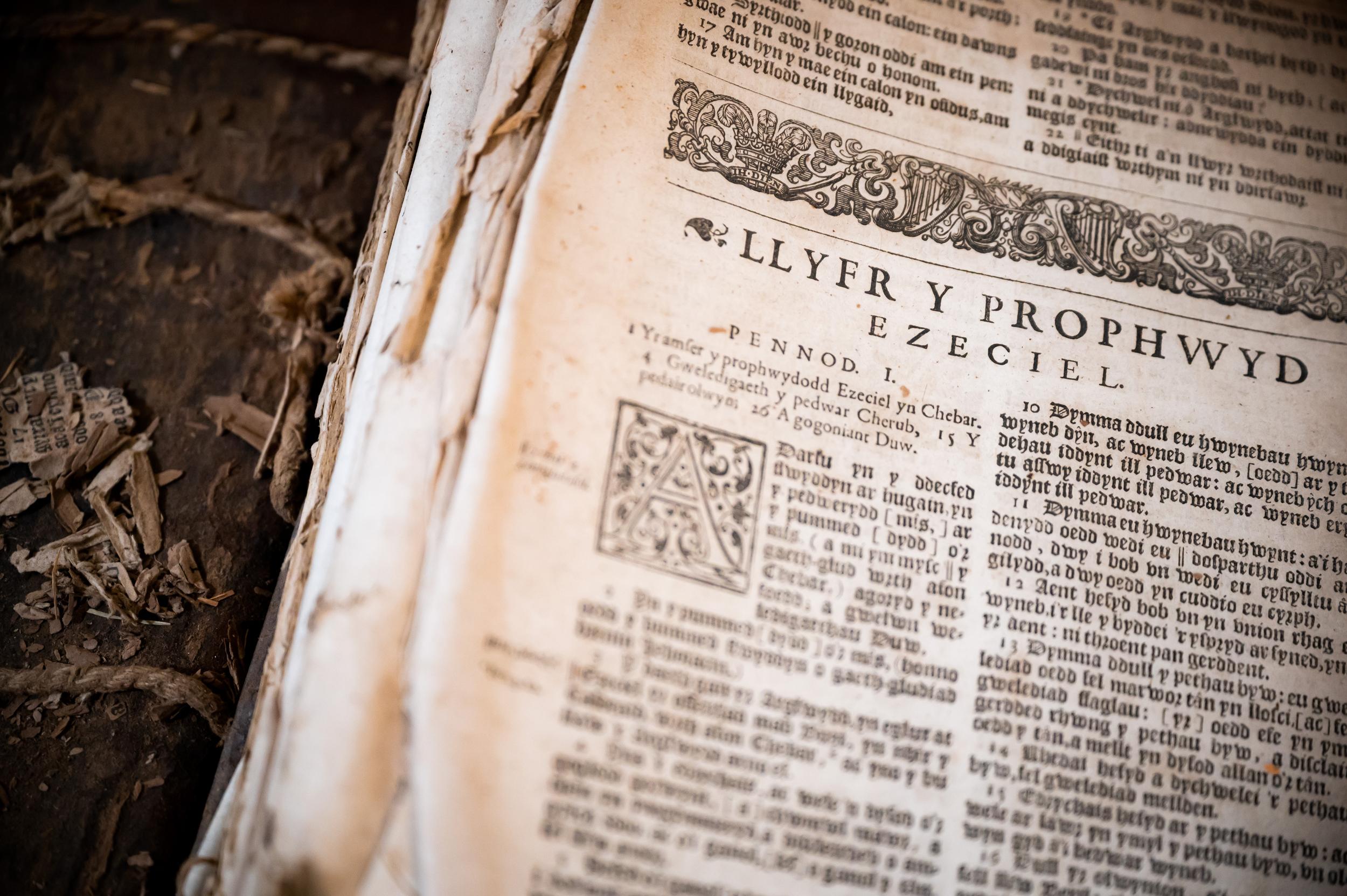
St Gwyndaf, Llanwnda, Pembrokeshire
Chosen by : Jeremy Martineau, Secretary of the Fishguard and Goodwick Chamber of Trade and Tourism
Sweet 6th century St Gwyndaf Llanwnda with its back to the Irish Sea is one of Wales unmissable gems, and visitors flock to see its ancient medieval roof, and the pilgrims well where pilgrims washed their feet en route to St Davids.
But how many knew this was the spot of the last invasion of Britain in 1797?
After scrambling up the cliffs one stormy winter night the French marauders burnt the pages of the ancient bible to keep warm, the charred pages of that very bible are on display for visitors in the church to this day.
Jeremy Martineau, Secretary of the local Chamber of Trade and Tourism has developed a wonderful circular 5 mile walk from the train station to the church, holy well and back. You’ll return through an even more ancient burial site at Garn Wen, a fascinating detour off the beaten track.
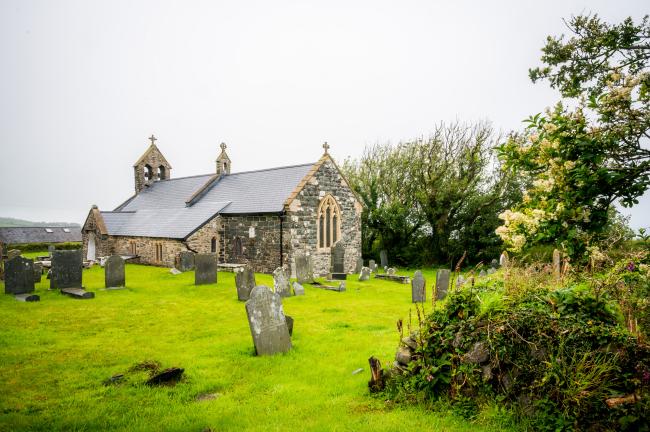
Llangelynnin Old Church, Gwynedd
Chosen by : Duncan Cameron
Starting in the village of Rowen on the western slopes of the Conwy valley, pass the Rowen chapel and walk up the ‘coffin path’ to the top of the hill.
‘Here you will discover Llangelynnin Old Church’, says Duncan, ‘which is located in an extraordinary setting, nestled into the hillside and with an incredibly ancient feel to it. There is a stillness and simple beauty about this small church which is quite unique’.
A circular walk from there takes you past a stone age fort, standing stones, a burial chamber silhouetted against the sky, and down the old Roman road back into Rowen.
It’s a 5 mile walk, with a steep pull up the hillside, and quite a steep road back down into Rowen, but there’s a great pub at the end of the walk to rest weary legs.
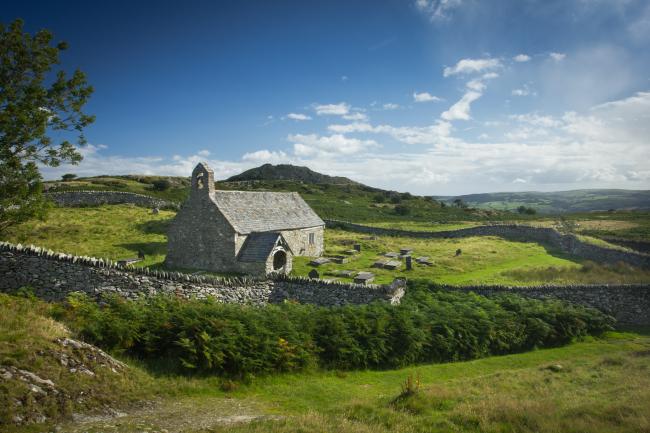
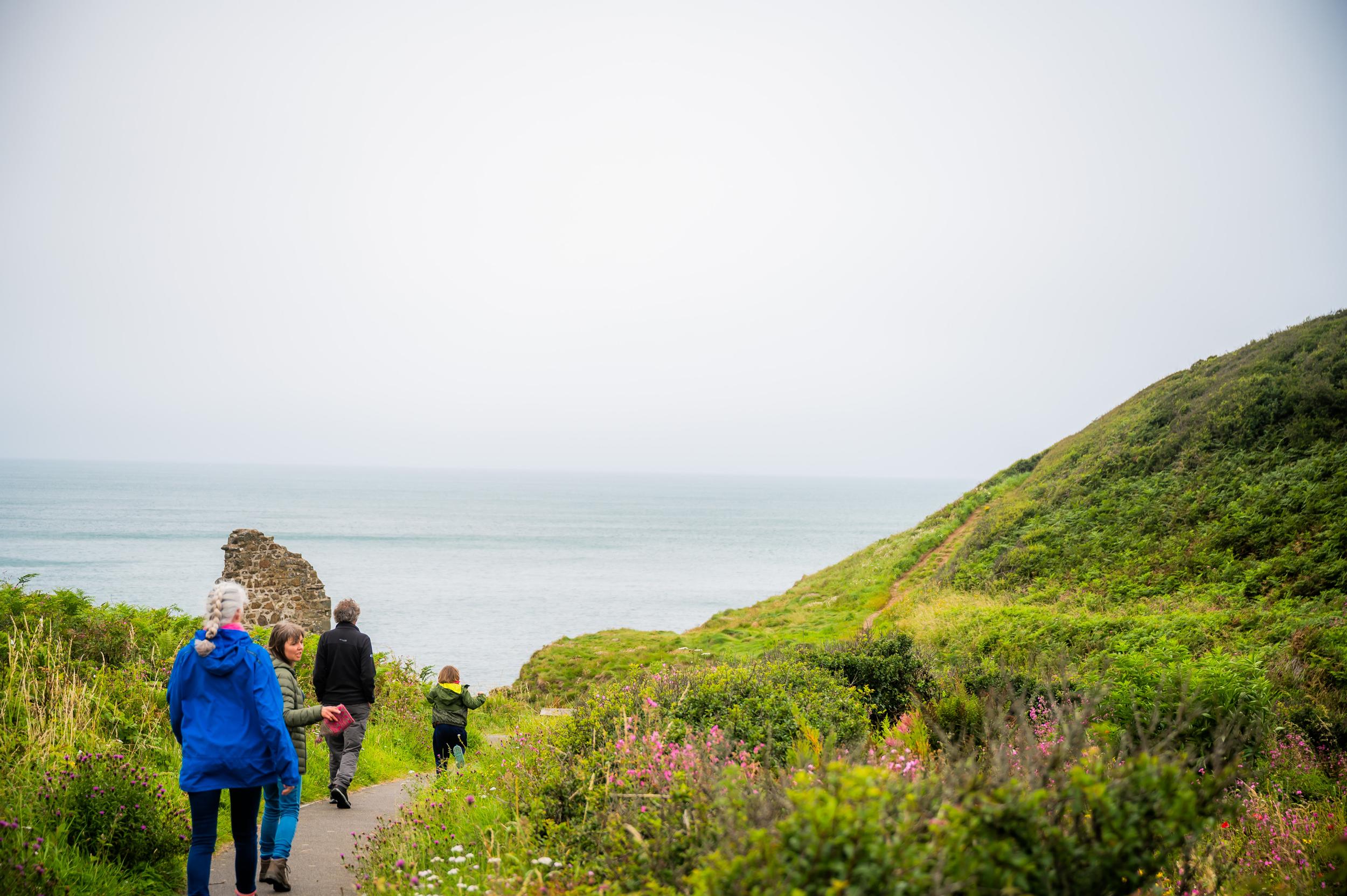
Wales Coast Path
Chosen by : Martin Crampin, Wales’s leading stained glass expert
The glorious Wales Coast Path that skirts the shores of the entire Welsh nation is a walkers paradise, but the stretch that passes through Ceredigion and Pembrokeshire is a favourite of stained glass expert, Martin Crampin.
He references churches, chapels and ruins in Manorbier, Mwnt and Llangrannog as special places. As well as St Govan, the tiny chapel built into a fissure on the side of a coastal cliff near Bosherston, and St Non Chapel, said to be the 6th century birthplace of the patron saint of Wales, St David. It is named after his mother, and remains a place of pilgrimage to this day, set amidst the beauty of one of the most spectacular stretches of the Pembrokeshire Coast Path.
Further north on the isle of Anglesey is another of Martin’s recommendations, the beautiful St Patrick Llanbadrig. Said to have been founded by the patron saint of Ireland himself, it is said St Patrick built the church in this scenic spot after being shipwrecked in around 440AD.
There are numerous walking routes around the island on which you will encounter several spots of sacred interest. A well known visitor, His Holiness the Dalai Lama, pronounced the site ‘the most peaceful spot on earth’.
Discover unmissable churches along all 870 miles of the path on our Wales Coast Path page.
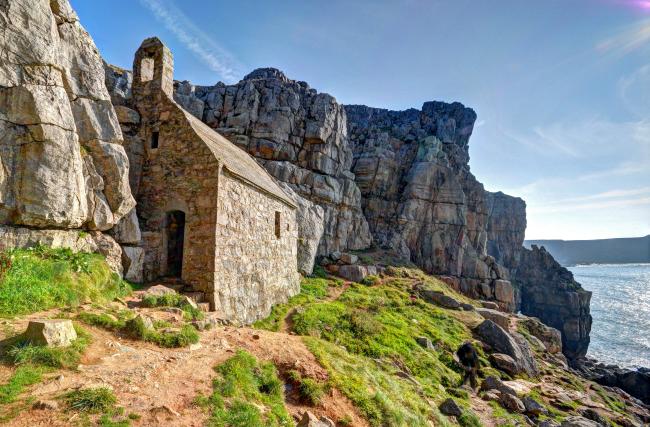
Glamorgan Heritage Coast
Chosen by : Manon Phillips, Visit Wales
The Glamorgan Heritage Coast stretches for 14 miles, from Aberthaw to Porthcawl with plunging cliffs, secluded coves and breath taking views along the way, not to mention the second highest tidal range in the world after the Bay of Fundy in Canada.
It is also one of the favourite spots of Manon Philips from Visit Wales who enjoys the walks in and around the village of Llantwit Major, including the Celtic Crosses & Coast Walk, a 3 mile route (with optional additional 2 miles) which takes in St Illtud Llantwit Major, notable for its connections with the 6th century Celtic saint.
Away from the coast and towards Cardiff, Manon also recommends the 21 mile Penrhys Pilgrimage Way. Penrhys in the Rhondda has long been a focal point for pilgrimage over many centuries and today you can walk the ancient medieval route that begins in Llandaff Cathedral in Cardiff and traverses the ever-evolving landscapes of South Wales to Penrhys, which is situated on a hillside overlooking both valleys of Rhondda Fawr and Rhondda Fach.
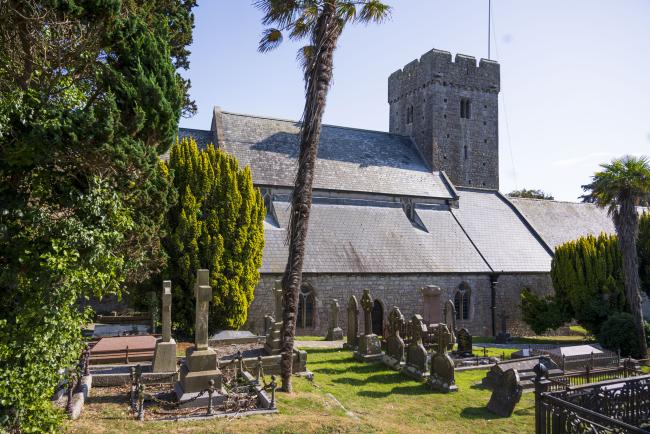
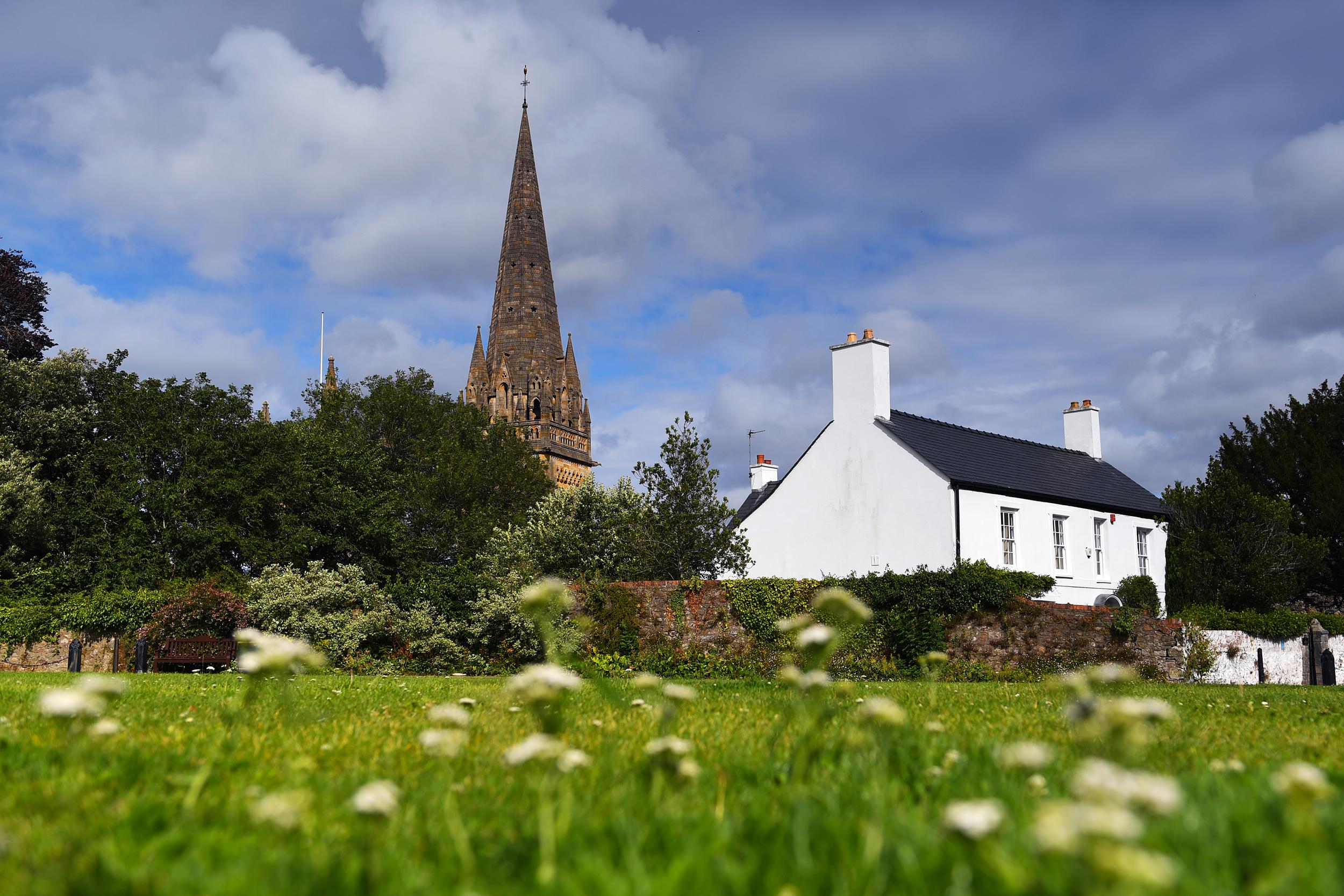
©CrownCopyright2020
